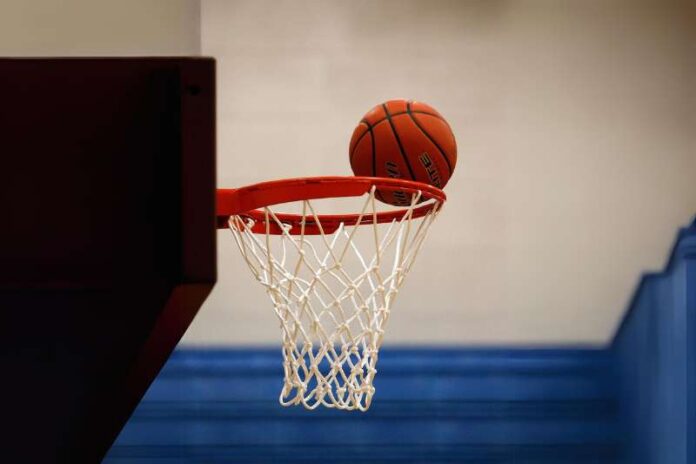Basketballs are orange to enhance visibility for players and spectators. The bright color helps track the ball during play.
Basketball has evolved significantly since Dr. James Naismith invented it in 1891. Originally, the game used a soccer ball, which was brown and difficult to see. As the sport gained popularity, the need for a more visible ball became apparent.
In the late 1950s, Tony Hinkle introduced the distinctive orange basketball to address this issue. The choice of color was deliberate; the orange hue contrasts sharply with the typically brown court and the hoop’s net, making it easier for both players to follow the action and fans to enjoy the game. This change not only improved the playing experience but also contributed to basketball’s growing appeal as a spectator sport. Today, the iconic orange basketball is synonymous with the game and is instantly recognizable to fans around the world.
The Origin Of Basketball
Dr. James Naismith created basketball in 1891. He was a teacher in Massachusetts. His goal was to keep his students active during cold months. Early basketball games used soccer balls. Peach baskets were the first hoops.
The first basketballs were brown. They were hard to see in dim gyms. After Tony Hinkle introduced the orange basketball. Its color made it easier for players and fans to see clearly. This change helped basketball become more popular.

Evolution Of Basketball Color
The story of the basketball’s color began with brown balls. Dark brown was the first choice. Visibility was poor with these balls. Players and spectators often lost sight of them. This made watching and playing the game hard.
During the 1950s, a man named Tony Hinkle sought better visibility. He wanted a ball that stood out against dark gym floors and basketball hoops. His search led to the introduction of the orange basketball. This change had a big impact. The new color improved visibility for everyone. Today, orange is the standard color for basketballs around the world.
Reasons For Choosing Orange
The bold orange hue of basketballs stands out clearly. This makes it easy for both players and spectators to track the ball. The color is also ideal for visibility in different lighting conditions. Whether the game is indoors or outdoors, the orange ball is easy to see.
Television broadcasts also benefit from the orange color. Cameras can capture the ball without any confusion. This was especially important when games first began to be televised in black and white. The distinct orange color contrasted well against both the court and the players. This made for a better viewing experience.
Adoption By Major Leagues
The National Basketball Association (NBA) chose orange basketball as its standard. This color offers high visibility for players and fans. The vibrant orange hue makes it easier to see the ball on the court. The ball’s distinctive color is now synonymous with the game.
Other global sports leagues also prefer orange basketball. This preference ensures a consistent experience for players worldwide. The color choice aids in uniformity across different leagues and tournaments.
| League | Color Preference |
| NBA | Orange |
| International | Orange |
Impact On The Game
Basketballs are orange for a few key reasons. This color helps players see the ball better. During a fast-paced game, spotting the ball quickly is crucial. A bright orange ball stands out against the court and hoop. This makes it easier for players to track the ball’s movement.
Players perform better with a ball that’s easy to see. The orange color can also help with shooting accuracy. When players can see the ball well, they can aim and shoot more precisely.
The color also enhances the audience experience. Fans can follow the game better when the ball is visible. A visible ball makes the game more exciting and engaging. Fans love to watch the action without losing sight of the ball.
Contemporary Basketball Design
Orange basketballs stand out on both indoor and outdoor courts. Their vivid color makes them easy to spot during a game. Advancements in materials have led to better grip and durability. Manufacturers now use rubber and synthetic composites for a consistent bounce.
Future aesthetics might include dynamic colors and tech integration. Think of smart basketballs with sensors to track performance. The design could also change for different playing surfaces or lighting conditions. Basketballs will remain easy to see, but may also help players improve.
Frequently Asked Questions
Why Does A Basketball Appear Orange In Science?
A basketball appears orange due to the dye used in its leather or synthetic cover, which is chosen for visibility and tradition.
What Color Orange Is A Basketball?
A basketball typically features a burnt orange color. This shade helps enhance visibility for players and spectators.
What Was The Color Of The First Basketball?
The first basketball was brown. It was made of leather and designed for visibility and durability during play.
What Color Are NBA Basketballs?
NBA basketballs are primarily orange in color. They feature a traditional orange hue complemented by black ribs and lettering. This distinct design enhances visibility and grip during games.
Conclusion
The iconic orange hue of basketballs isn’t just for show; it has practical roots. It’s a blend of visibility, tradition, and design that enhances the game for players and fans alike. Remember, the next time you shoot hoops, the ball’s color is a key player on the court, too.
Keep dribbling and shooting in style!


